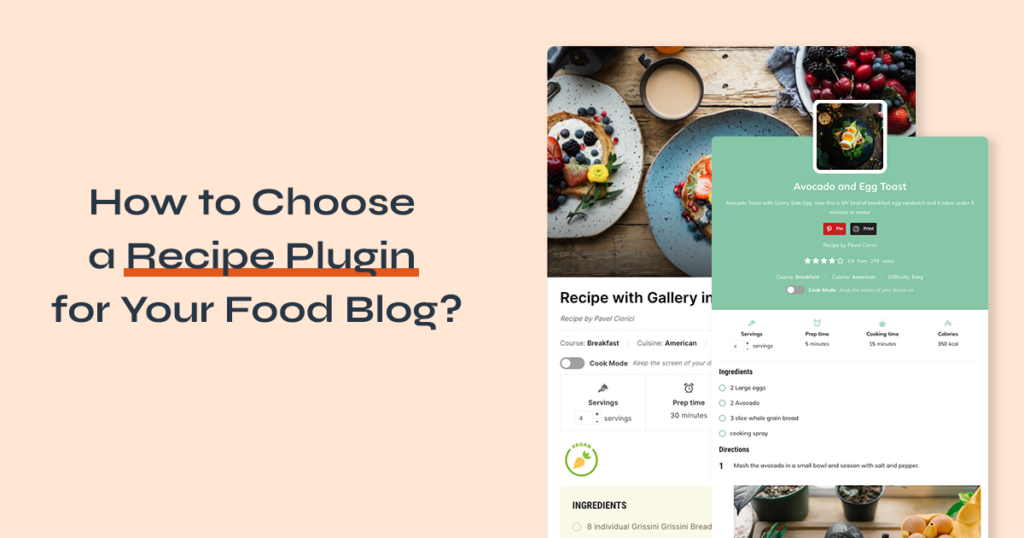
Either if you’re a novice in food blogging or already have experience in this field, choosing the right recipe plugin can be tricky and confusing. With many good options to choose from, you might think you’ve found the best one at a first impression. However, in some cases, you might encounter difficulties in the process of using the plugin.
To avoid this, we’d like to help you by thoroughly describing what features to look for in a recipe plugin. Hopefully, this will show you how to make the best choice that will serve your WordPress food blog in the long term.
What Are the Advantages of Using a Recipe Plugin?
Using a recipe card plugin comes with a set of advantages:
- All in one options. This means that all the options you need to create and publish recipes are integrated within the same plugin. The advantage is that your recipes are organized and easy to manage and no other additional plugins are required. This will have a very positive impact on the loading speed of your website and overall usability.
- Discoverable recipes. A good recipe card plugin includes all the necessary settings to make your recipes discoverable in search engine results.
- No coding skills required. With a recipe plugin, you mostly insert all the recipe details and adjust displaying options. The plugin covers all the hard coding stuff and your workflow is already thought of by the developers of the plugin.
- Easy theme migration. With a recipe plugin, you don’t have to worry about your recipes when switching to another theme. Since the recipes are handled by the plugin, they will work well regardless of the theme you use.
What Features to Look for When Choosing a Recipe Card Plugin?
Having a broad experience in creating products for flood bloggers, we’ve gathered a list of the most important features to look for in a recipe card plugin.
Updates Frequency and Plugin Developer Reputation
You want a recipe plugin that you can rely on in the long term. This is why we recommend researching a bit about the plugin developer and how long they’ve been on the market.
Another important aspect is the frequency of the plugin updates. Make sure to check the changelog of the plugin you’re considering and see how often it is updated. If the plugin hasn’t been updated in a long period of time, chances are that it is not compatible with the latest WordPress version or with your theme. It’s also worth mentioning that if the plugin has a premium version, this most definitely means that it receives constant updates.
In the WordPress.org plugin repository, you can check the changelog of each plugin in the Development section on the plugin page. You should also be able to see the changelog of the premium version of the plugin on the developer’s website.
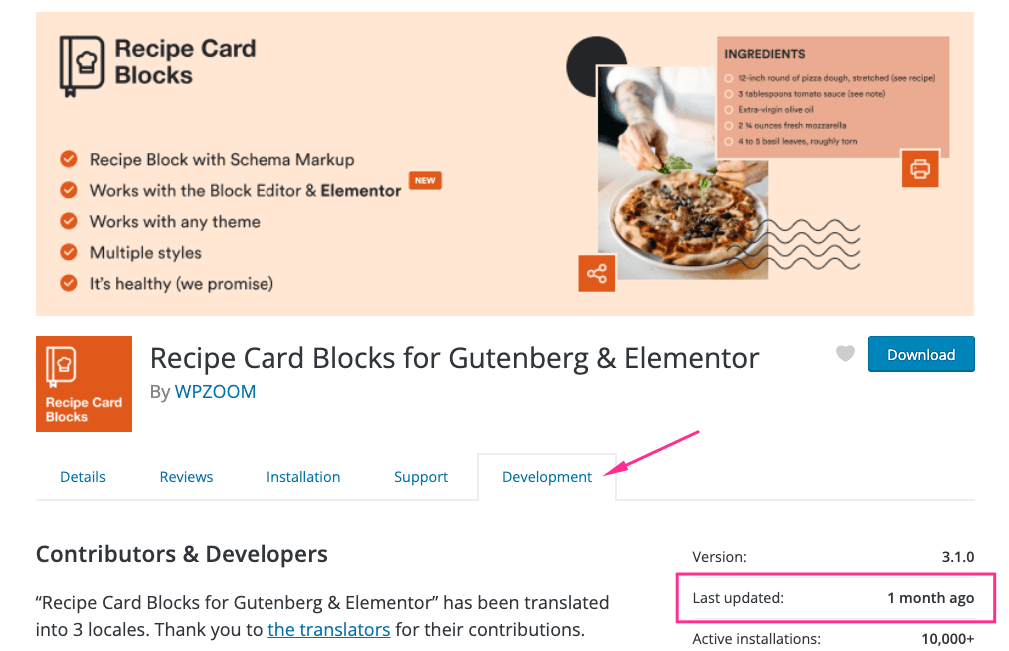
Simple and Intuitive Recipe Creation
Creating and managing your recipes should be a simple and intuitive process. A good recipe card plugin should meet by default all the needs of a recipe creator. You can make a first opinion about the recipe creation process from the interface screenshots of a plugin. These can be usually found on the plugin description page.
In order to ensure that you choose a plugin that provides a simple and intuitive workflow for you, we suggest you test out its free version. Usually, the free version includes the basic features of the plugin and you can use it to see the plugin in action.
It’s always a big advantage if the plugin includes recipe templates. This way, the process of adding recipes to your food blog will become even more productive. Also, having global options and settings for the recipes is a big plus. Once applied, these options will affect all future recipes and will save you some time.
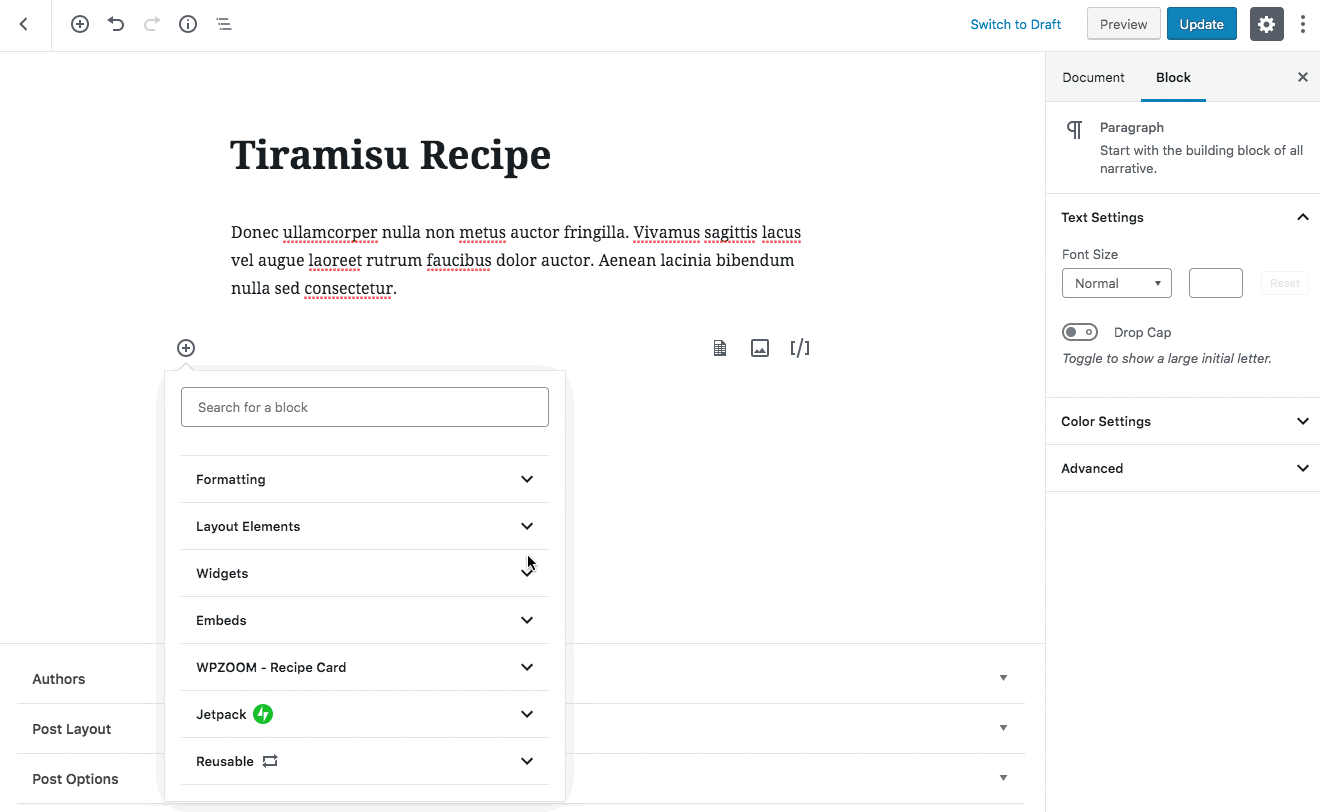
Schema.org Integration
Schema.org integration is one of the most important features to look for in a recipe plugin. The structured data markup ensures that your recipes are discoverable in search engine results. Therefore, this is one of the main pillars of attracting traffic to your food blog.
Structured data is a set of code tags that are not visible on the frontend of your website, but can be read by search engines. It’s like a specific vocabulary that is applied to all the recipes on the internet so that they will be displayed in search results, including in the form of rich snippets:
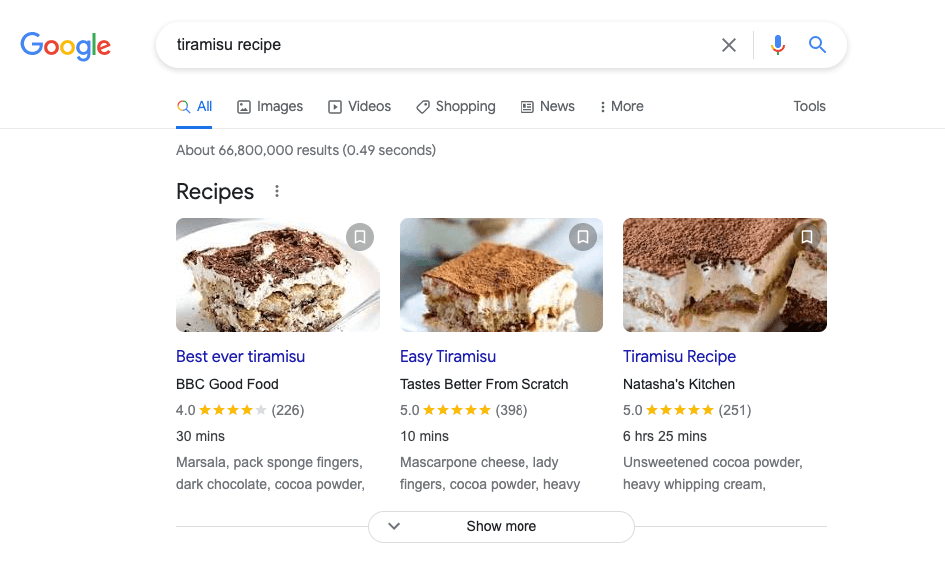
There are different types of structured data that you can add to your recipes, but Google recommends the JSON-LD format.
Although this sounds complicated, you don’t need to worry about it because you can have a WordPress recipe plugin do everything for you.
You should opt for a recipe plugin that allows testing the structured data before publishing your recipes. This will ensure that your recipes are neatly delivered to your readers and ready to be indexed in search engine results.
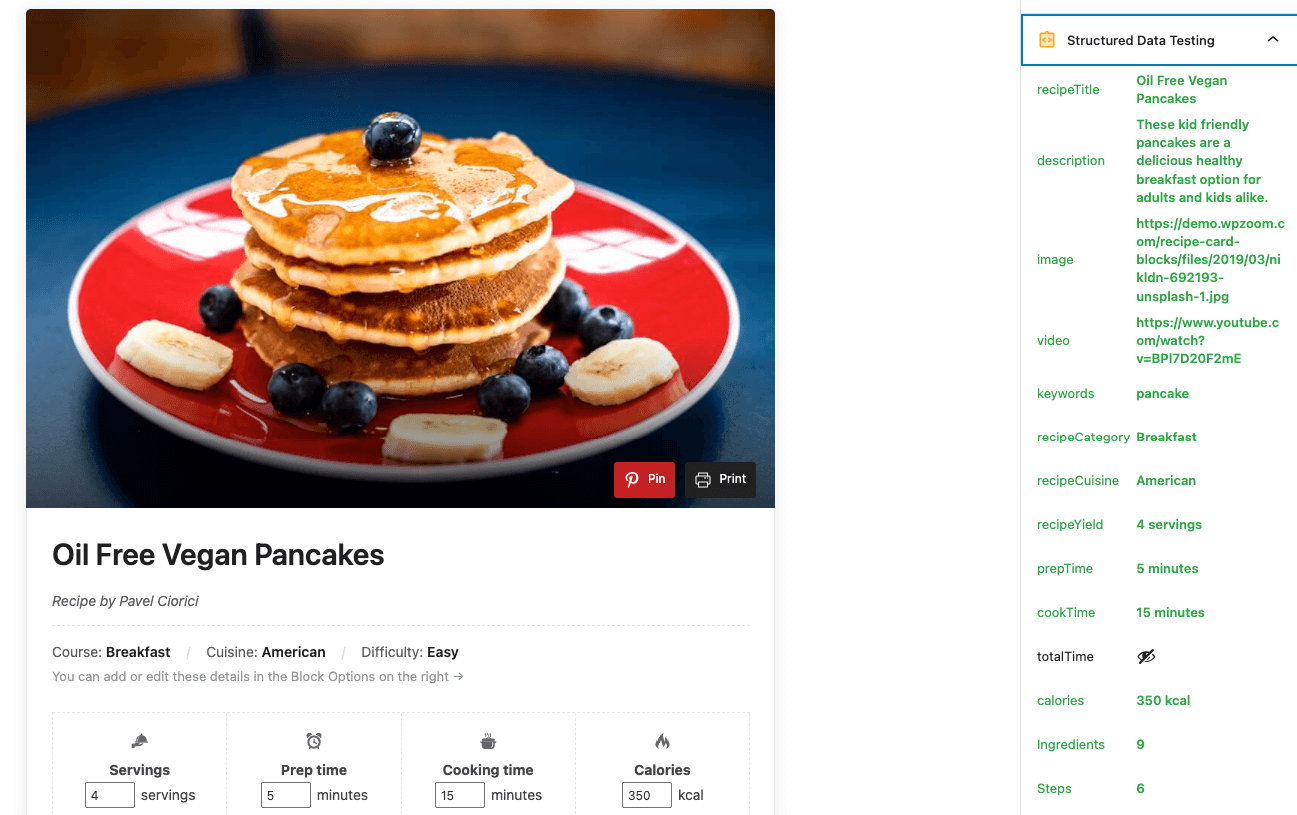
Customization Options
A proper recipe card plugin includes customization options. This is especially helpful when you want your recipes styling to match the branding of your blog. Make sure the recipe plugin of your choice includes customization options for colors, icons, buttons, or other elements.
You will definitely find useful a recipe plugin that includes custom fields and labels in case your recipes are more specific.
It’s also important to have the flexibility to hide certain sections that you don’t want to be displayed in some recipes.
Usually, testing the free version of the plugin will provide a general impression of what customization options are included. Make sure to check the options available for each recipe in particular, as well as what general plugin settings are available.
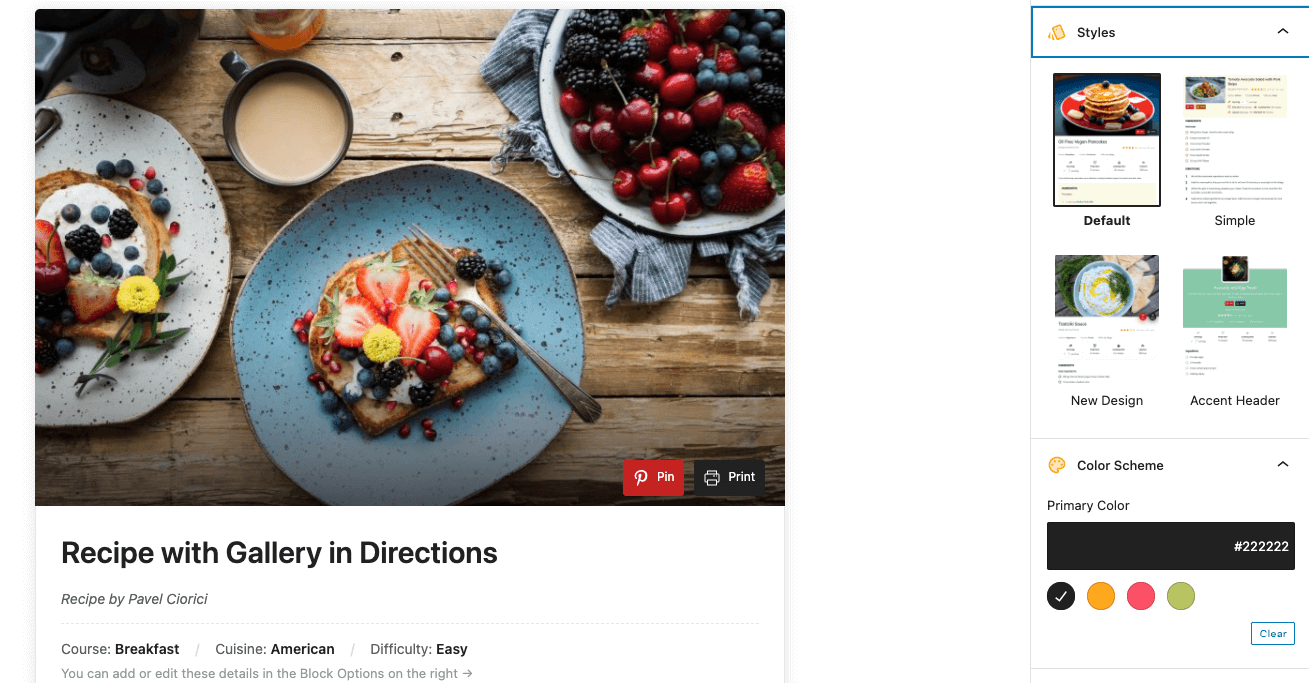
Custom Post Types
It’s always better if the recipe card plugin includes a custom post type for the recipes. First, it’s easier to organize and edit the recipes when they’re gathered in one single directory. Second, it facilitates the process of migrating to another theme and doesn’t affect the recipes in any way.
Another advantage of this feature is that in case your recipes are displayed in several blog posts and you need to make some changes, you’d only have to edit the recipe itself. All the changes will be applied automatically throughout the website, where the recipe is added.
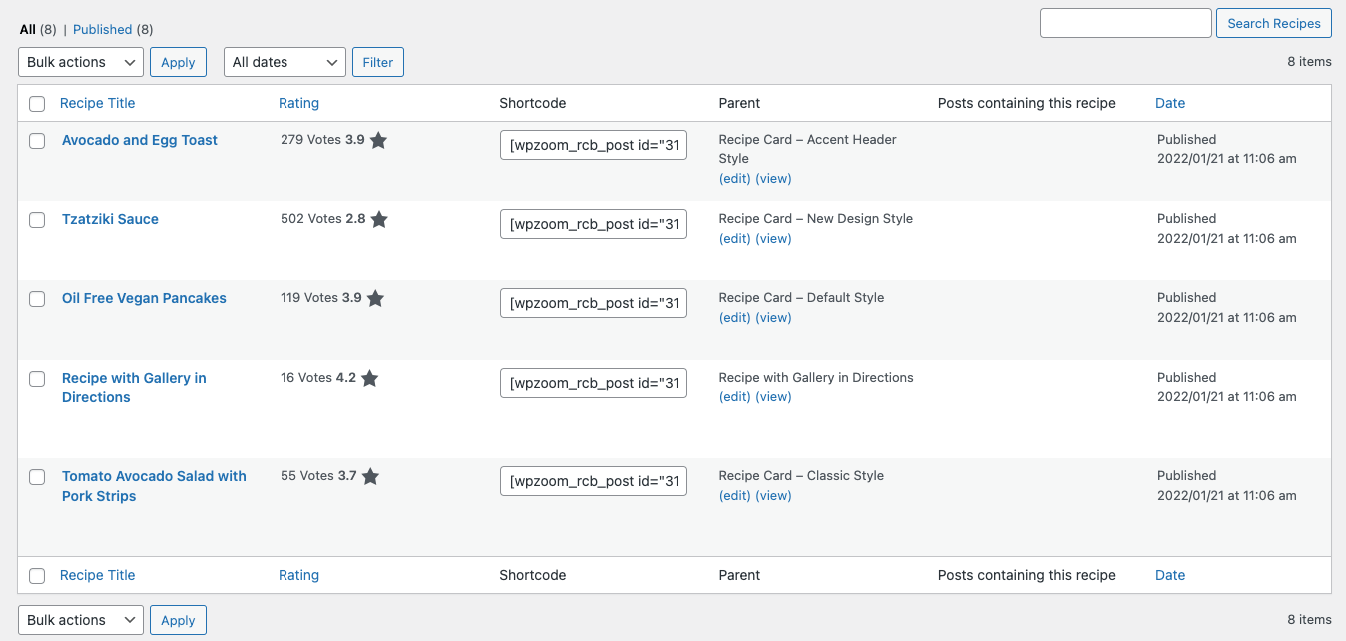
Recipe-Specific Features
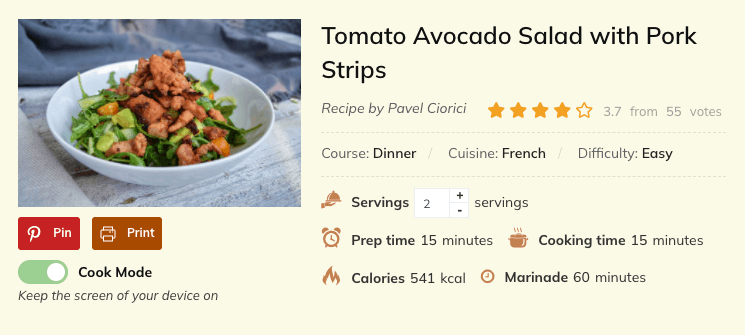
Print Button
A print button is a must in a recipe card plugin. This feature is very useful for the readers to gather recipes as PDFs or for their printed offline collection.
Pinterest Sharing Button
Pinterest is one of the top social media platforms where food bloggers can promote their recipes. With a Pinterest sharing button, you can easily turn your website visitors into promoters of your food blog. If they find your recipes interesting, your readers will save them on their Pinterest boards.
Star Ratings
Star ratings are a great feature to have for your recipes. This way, the readers of your blog can rate your recipes and provide feedback. Moreover, the star ratings are displayed in search engine results, so it’s a noteworthy feature for SEO. Having recipes with good star rating scores makes them more clickable, thus your blog will receive more traffic.
Servings
The Servings feature makes your recipes flexible and provides your readers the option to convert the recipe ingredients to different serving sizes.
Cook Mode
The Cook Mode feature is very useful in the cooking process. It ensures that the screen doesn’t turn off while the recipe is viewed on a mobile device.
Nutrition Facts
Every recipe comes with nutrition facts and for many readers, this is an important detail. Therefore, it’s a useful feature to have in your recipe plugin, so make sure to add it to your checklist.
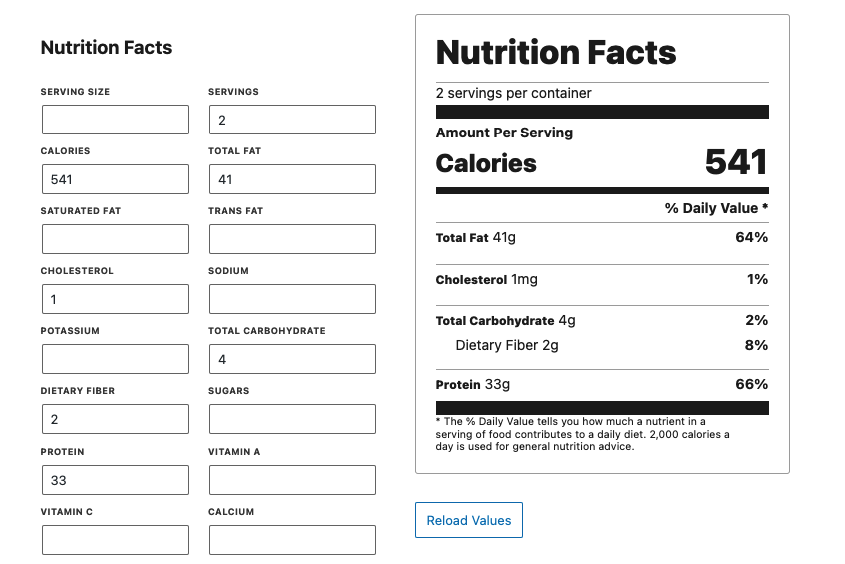
Social Media Integrations
Social media platforms are important channels for promoting your food blog. If the recipe plugin includes social media integrations — it’s a keeper. Here’s an example of a customizable recipe plugin footer with Instagram and Facebook integrations:

Video Recipe Integration
It’s no news that video content is the top type of content at the moment. Therefore, having video recipes is a great advantage as your recipes will become even more easily discovered.
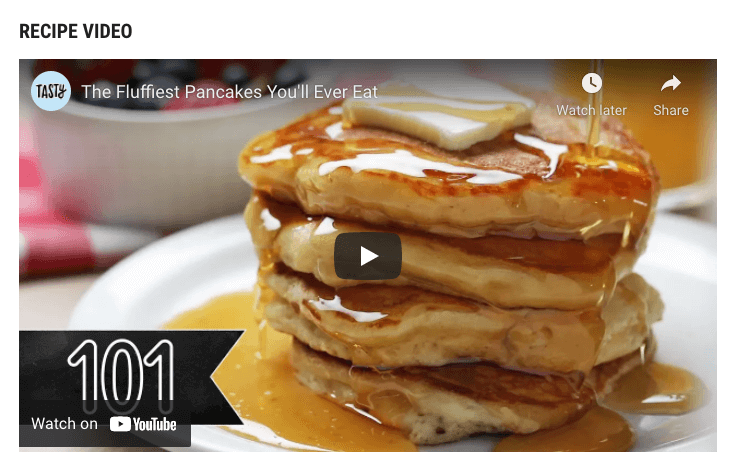
Unit Conversion
Metric or US? Since the visitors of your website can be from anywhere around the globe, it’s a thoughtful touch to have the unit conversion feature in your recipe plugin.
Plugin Support and Documentation
When choosing a recipe plugin, it’s very important to take into consideration the type and quality of the support you will receive. Check if the price of the plugin includes support or if you should pay for it more or separately. This is usually specified in the Support Policy of the plugin developer.
You should also ensure that the plugin includes detailed documentation. The documentation has to cover the basic setup aspects and provide solutions for the most common use cases of the plugin.
Compatibility
Your recipe plugin should be compatible with WordPress and its latest version. Also, make sure the plugin is fully integrated with the block editor (Gutenberg).
It’s a great advantage if the plugin is compatible with your favorite page builder (Elementor, Beaver Builder, WPBakery, and others). This provides even more flexibility for creating your recipes.
Responsiveness
When having the intention to cook something, you’ll most probably search for the recipe on your mobile phone or tablet. So do the visitors of your blog. Moreover, the statistics are here to back up this fact: more than 50% of web traffic comes from mobile.
This being said, check if the recipe plugin of your choice supports a responsive layout. The easiest way to check this feature is by accessing a demo page where a recipe is displayed and resizing the browser window.
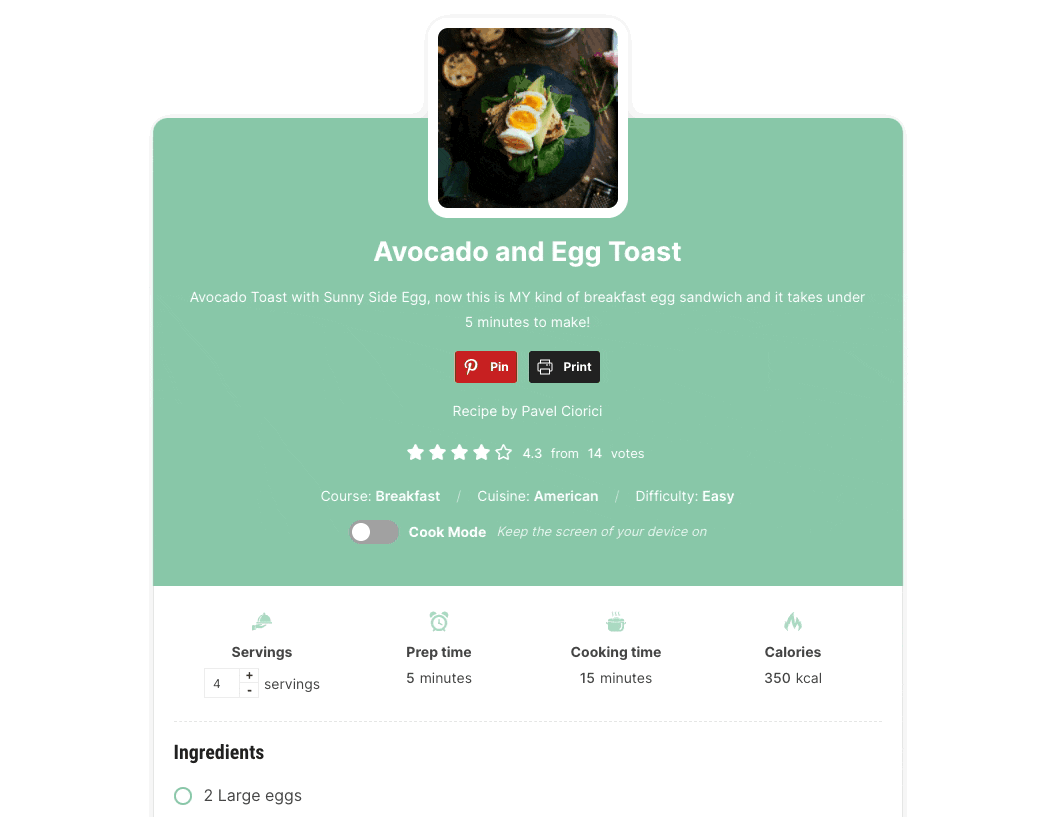
Monetization Options
Food blogs are a great way of monetizing recipes. That’s why having monetization features included in your recipe plugin would be a great advantage. The most simple method is the option to add affiliate links (e.g. ingredients or tools from Amazon) in the ingredients or directions sections.
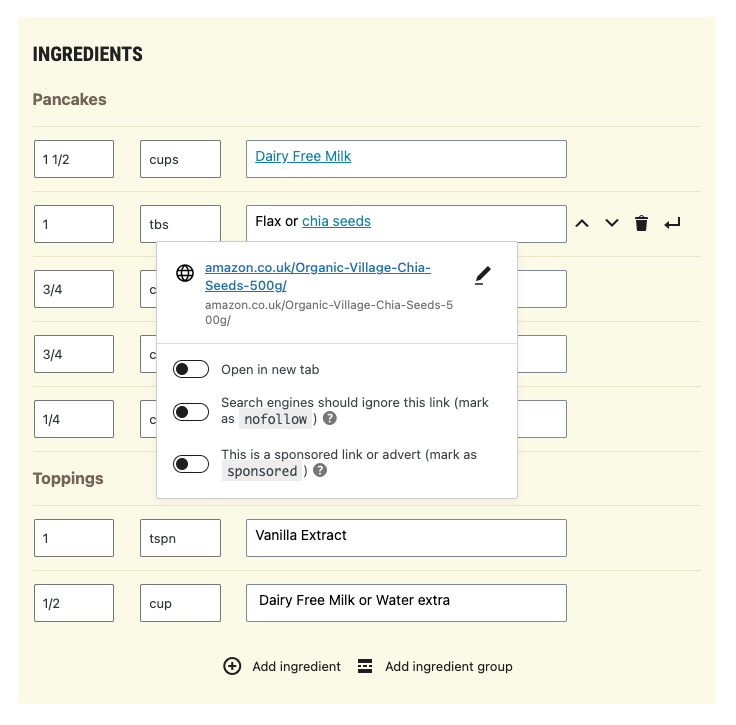
Some plugins include dedicated sections where you can add ingredients or tools associated with the recipe. This includes adding images, titles, and links for each item in particular.
Why is Recipe Card Blocks a Great Choice to Add Recipes to Your Food Blog?
Recipe Card Blocks is one of the most popular recipe plugins for WordPress. It works specifically with the block editor (Gutenberg) and is compatible with any WordPress theme. Moreover, its responsive layout will adapt to any screen size. This will make your recipes look great on mobile devices.
The plugin receives frequent updates as you can see from its changelog. Moreover, it follows a roadmap and our team works closely with food bloggers to understand what features they need most.
Recipe Card Blocks is user-friendly and provides a simple workflow. The testimonials from its users are proof of how easy it is to use:
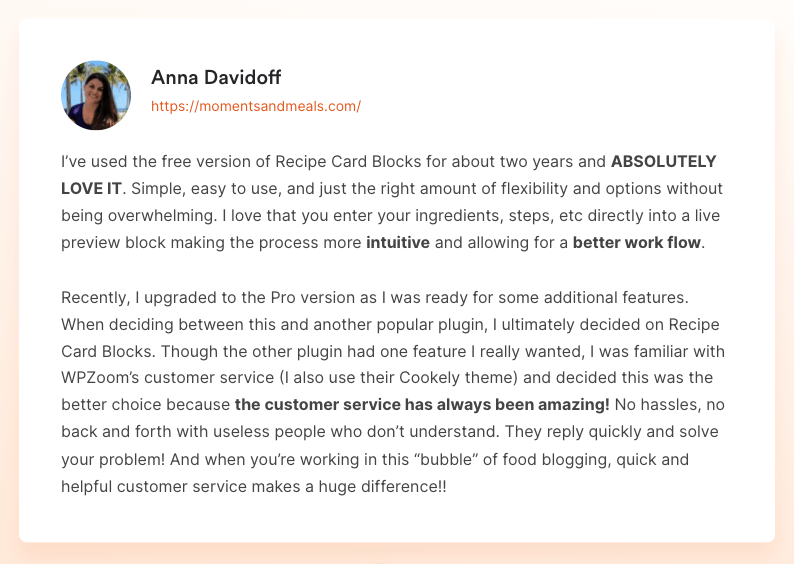
Schema.org integration and the live structured data testing option are what make Recipe Card Blocks a reliable plugin. This ensures that your recipes are search engine-friendly and easily discoverable.
The customization options included in the plugin allow you to choose from 4 recipe styles. Moreover, you can adapt each style to match the branding of your blog. There are also plenty of global plugin settings that apply to all the recipes.
The custom post types available in Recipe Card Blocks allow you full control over creating new recipes and organizing the existing ones.
Recipe Card Blocks includes all the recipe-specific features a food blogger needs: print & Pinterest buttons, adjustable servings, star ratings, cook mode, video recipe, customizable footer, nutrition facts & many more.
You can easily monetize your recipes with Recipe Card Blocks. Since the ingredients and directions sections support hyperlinks, you can add affiliate links and gain commissions.
Our team provides fast and friendly support. This way, you can be sure you will receive all the needed help in case you encounter some difficulties. Also, our detailed documentation is here to help with the most frequent questions and basic plugin setup.
Are You Ready to Create Your Recipes?
Now that you know what features to look for in a recipe plugin, we’re sure you’ll choose the right plugin for your food blog.
We recommend giving Recipe Card Blocks a try or checking its demo first. If you’re looking for more advanced features, make sure to check Recipe Card Blocks PRO.
What are the top features you are looking for in a recipe plugin? Let us know in the comments section! 👇